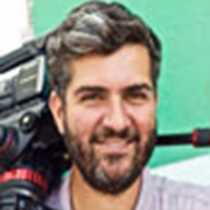Isabela & Fernandina
Last night we sailed 120 miles from Puerto Ayora all the way to the Northwestern coast of the archipelago. Here the ocean platform sees a dramatic drop off to depths of over 19.000 feet. Thanks to this particular topography, cold nutrient rich currents rise to the surface and the marine life thrives.
The day begun with a watch for cetaceans and some of us got a glimpse of what seemed to be a Bryde’s whale. After breakfast, everybody gathered again in the bridge to watch the ship’s GPS as we crossed the Equator line. King Neptune himself made a quick appearance to greet all the new Shellbacks, as are called those experienced sailors who have crossed from one hemisphere to the other.
Later in the morning, a Zodiac ride took us close to Punta Vicente Roca, an area that attracts large numbers of Pacific Green Sea Turtles. We could see their heads popping up everywhere and one of our Zodiacs counted twenty of them in the water! The visibility wasn’t very good, but how often does one get to snorkel with sea turtles? So we went back to the National Geographic Islander, got our gear on and went back in the water, where we soon realized that when in Galápagos even murky waters make for great snorkeling. We saw a flightless cormorant feeding its chicks within a few feet from us. There were also many male marine iguanas elegantly swimming with their tails and heaps of juveniles scraping algae from the nearby rocks.
In the afternoon we sailed across the Bolivar channel towards Fernandina Island. This is Galápagos at its best. Unlike other Islands in the archipelago, Fernandina hasn’t been affected by the introduction of large alien species and it is considered the most pristine island on Earth. It is also the youngest Island in Galápagos. It last erupted two months ago. Here we walked over huge lava fields and enjoyed some of the most breathtaking landscapes in the world.
Back on board, it was time for our daily recap, where everybody learns a bit more about what they’ve seen earlier. Aided by our video microscope, Sofia showed us what that murky water was all about: innumerable microscopic organisms in all sorts of unique shapes - beauty at the base of the food chain.
Call +1.800.397.3348 or contact your travel advisor




